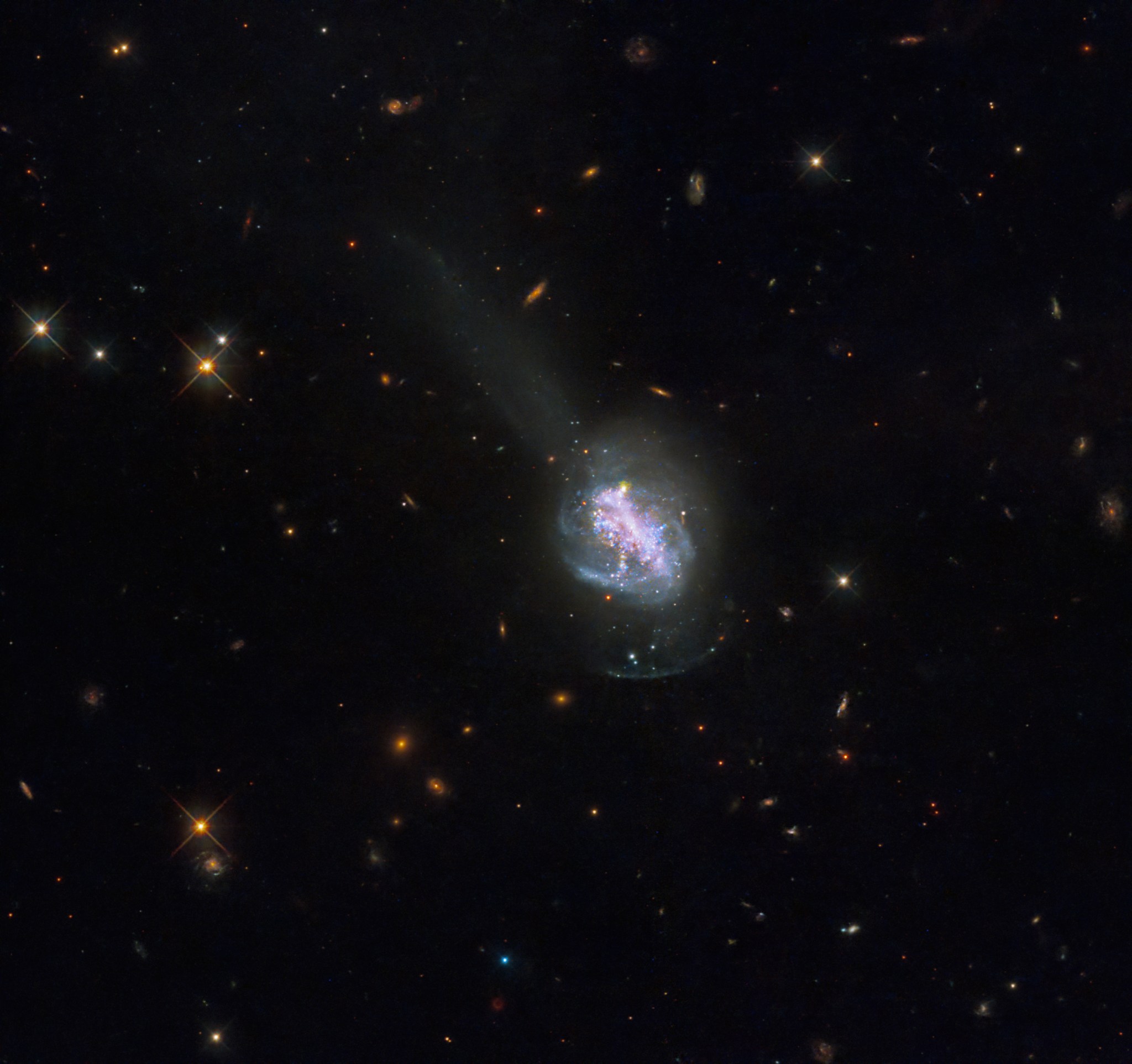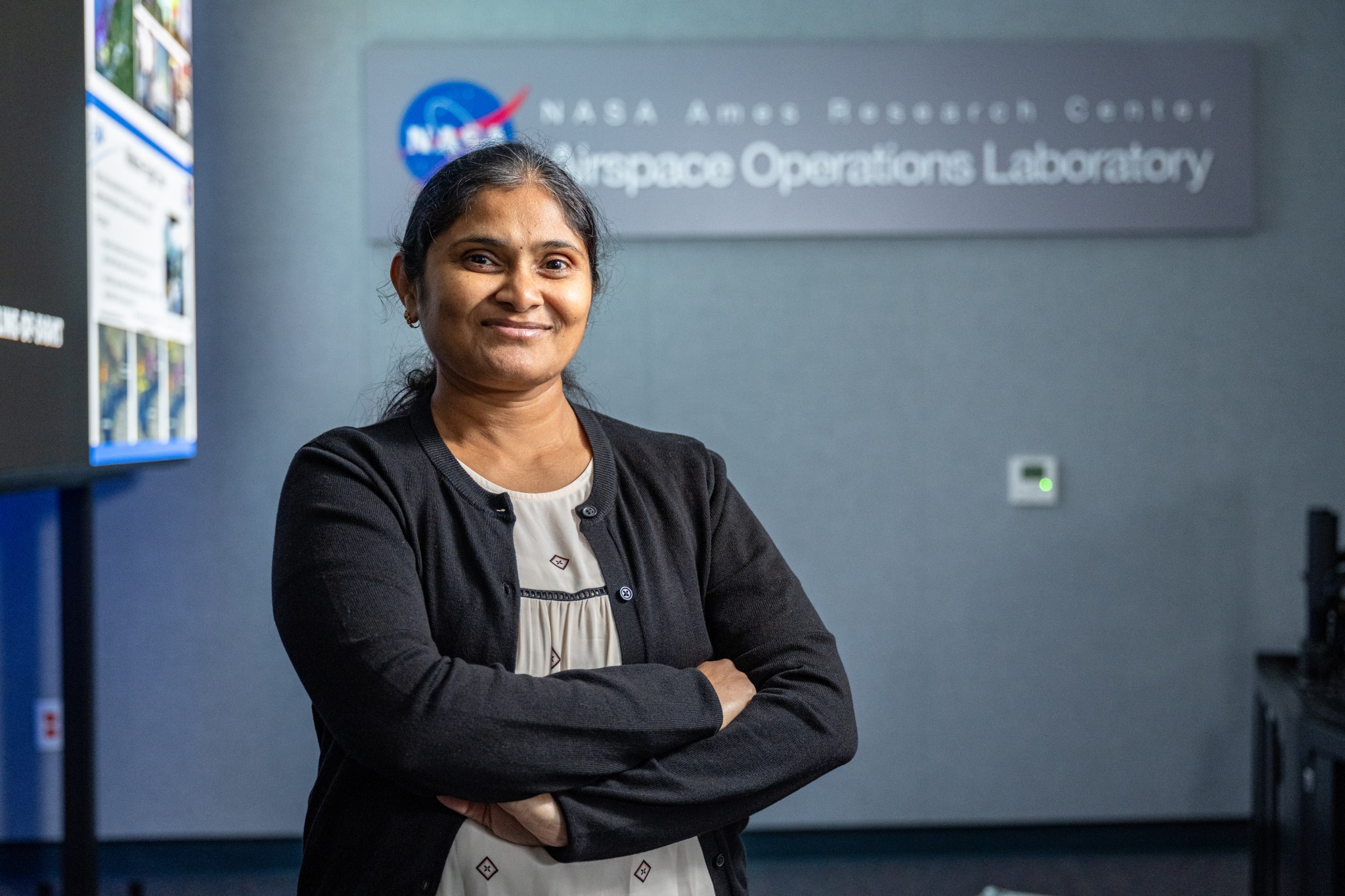2 min read
Hubble Sees a Merged Galaxy

This new NASA Hubble Space Telescope image shows ESO 185-IG013, a luminous blue compact galaxy (BCG). BCGs are nearby galaxies that show an intense burst of star formation. They are unusually blue in visible light, which sets them apart from other high-starburst galaxies that emit more infrared light. Astrophysicists study BCGs because they provide a relatively close-by equivalent for galaxies from the early universe. This means that BCGs can help scientists learn about galaxy formation and evolution that may have been happening billions of years ago.
Hubble imaged ESO 185-IG013 in ultraviolet, visible, and infrared wavelengths to reveal details about its past. Hundreds of young star clusters, many of which are younger than 100 million years, populate the galaxy. A large number of star clusters are only 3.5 million years old – relative infants compared to the timescale of our universe. Scientists predict that many of these youngest clusters will not last, since young clusters can often perish after expelling too much of their gas. The large number of young star clusters indicates that this galaxy was part of a recent galaxy collision and merger. The perturbed structure of the galaxy, which likely occurred from the violent interactions of gas and dust during the collision, is another sign. The merger supplied the system with lots of fuel for star formation, which continues to take place today.
ESO 185-IG013 also contains a tidal shell, the diffuse glow surrounding its bright center, which is a common signal of galaxy mergers. Scientists believe that in a galaxy merger, the smaller of the two interacting galaxies gets disrupted by the larger galaxy, losing most of its material. This releases the material, which then gets pulled in again by the gravity of the larger galaxy. The dense area where the material gets repositioned is called the shell, and it contains many star clusters. In addition to the shell, ESO 185-IG013 boasts a tail of gas in the northeast.
All of the stars in the system have a combined mass more than 7 billion times that of our Sun. The system is located about 260 million light-years away.
LEARN MORE:
Media Contact:
Claire Andreoli
NASA’s Goddard Space Flight Center, Greenbelt, MD
claire.andreoli@nasa.gov
Details
Discover More Topics From NASA
Hubble Space Telescope
Since its 1990 launch, the Hubble Space Telescope has changed our fundamental understanding of the universe.

Galaxies Stories

Stars Stories

James Webb Space Telescope
Webb is the premier observatory of the next decade, serving thousands of astronomers worldwide. It studies every phase in the…

from NASA https://ift.tt/yG1Zmuh


No comments:
Post a Comment